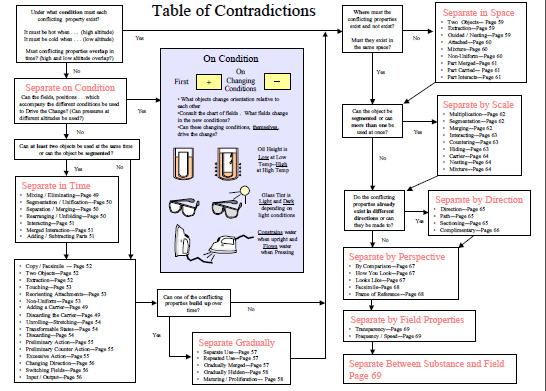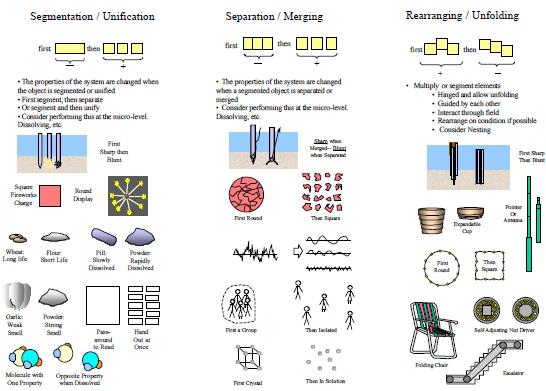Breakthrough Thinking with TRIZ
Editor | On 21, Jan 2004
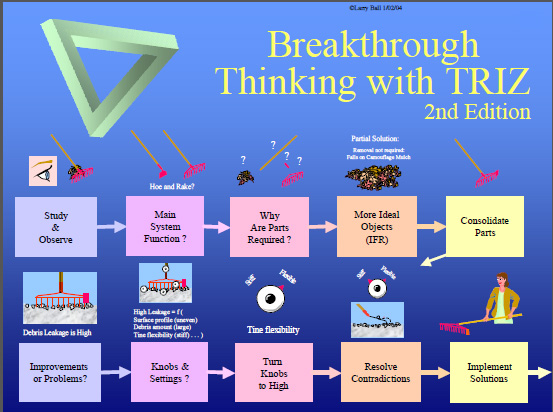
&
Observe
It takes some time and effort to come up to speed on a problem. Lots of questions need to be asked. Do not rely on the experience of others. Gain firsthand experience of the difficulties and disadvantages of the system.

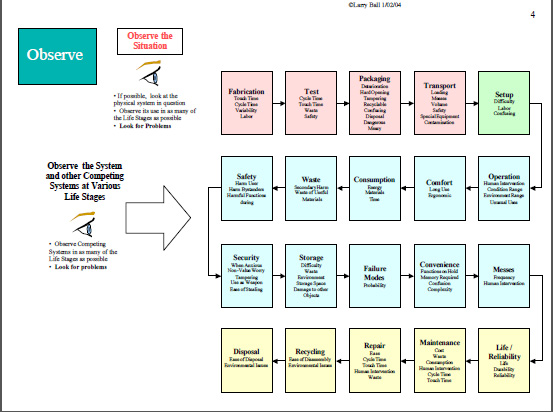
Function ?
What jobs do people hire this system to do? Can our system take on additional functions from the super-system? The outcome of this problem step is an identification of the main functions that our system perform.


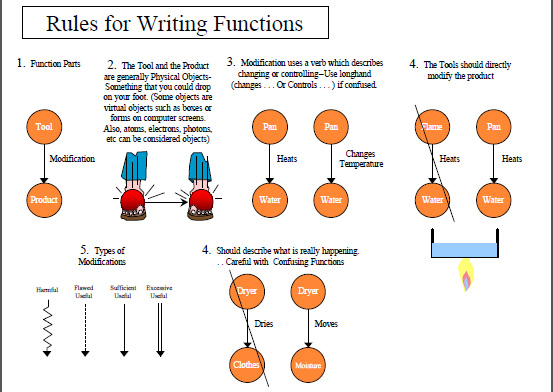
After studying the system in its various life stages, we naturally note problems with the system. These problems can be described with functions. These functions in turn are caused by other harmful functions or are required to
remediate other ineffective useful functions. A chain of functions can be formed, which lead from one element to the next. Later, we will consider idealizing functions along this path to reduce the parts.
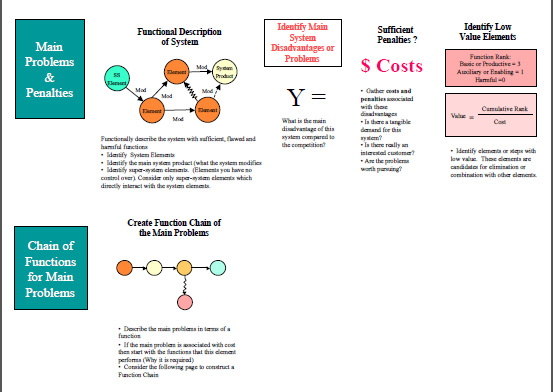

Knowing the chain of cause and effect which urges us to use low value parts helps us to see all of the functions that drive us to use them. Idealizing any of the functions in this chain will allow us to reduce system parts and achieve a more ideal system.

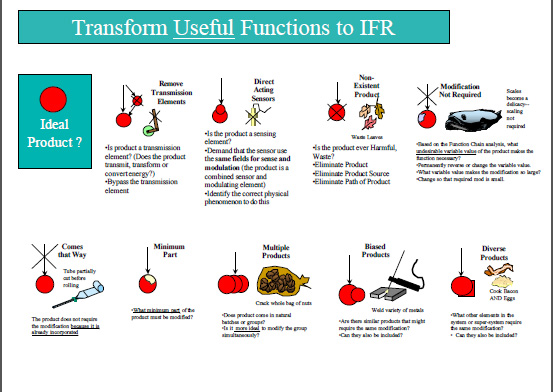




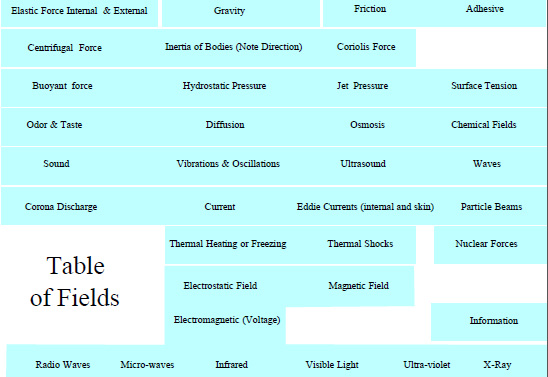



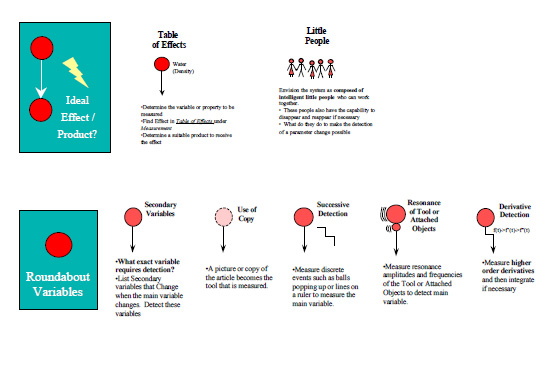

Individual Parts can often be reduced in number when elements take on more functions
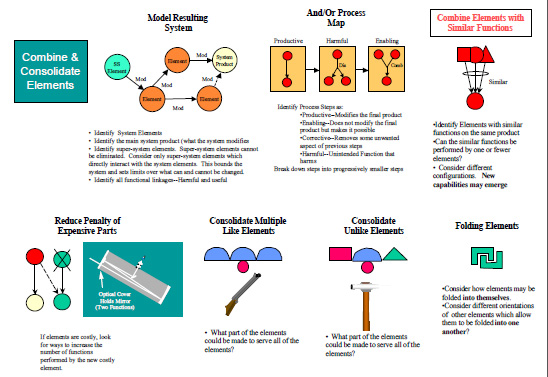
We may be starting with an existing system or the idealized system from the previous steps. In either case, the system is likely to have problems or disadvantages (compared to other existing competing systems).
• What are these disadvantages
• Is it worth removing the disadvantages?
• What are our goals to remove them?

With a clear idea of the disadvantage that we want to remove, we must become detectives and discover the chain of causes which give rise to this problem. By the end of this step, we will know the knobs and their settings which cause our problem.
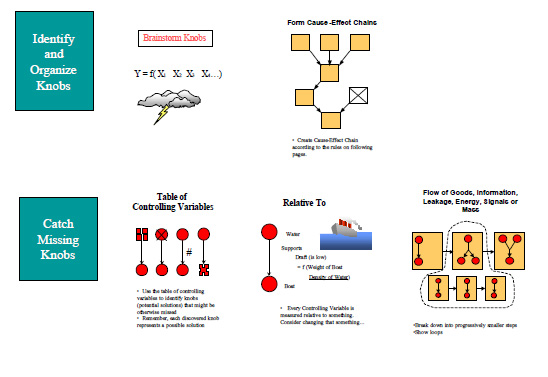


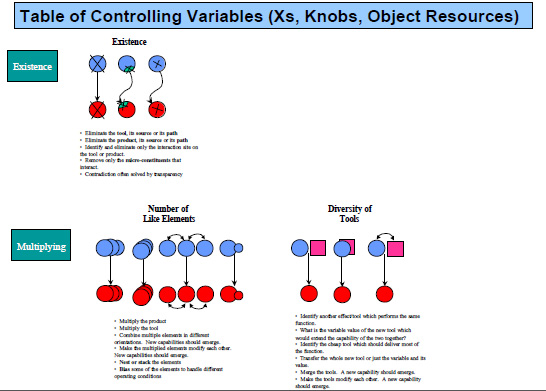
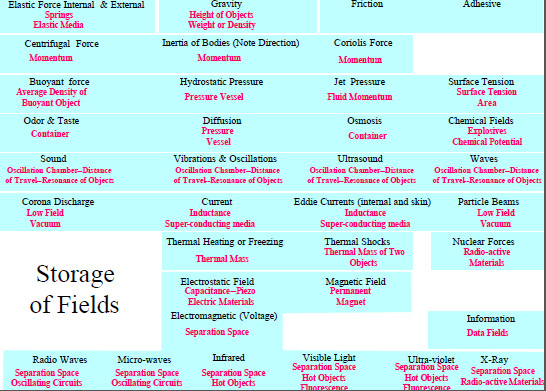
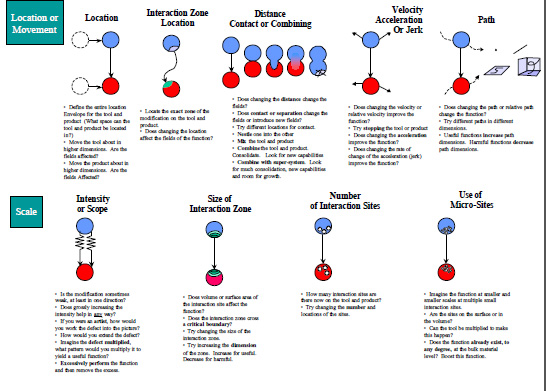
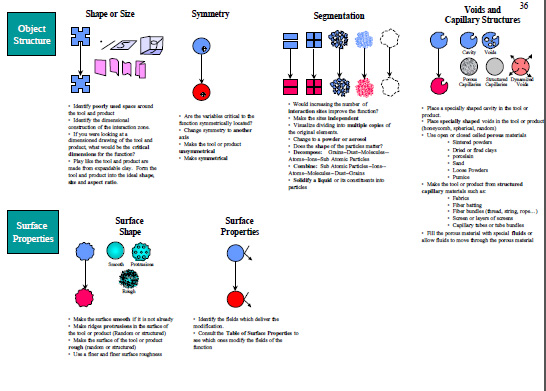

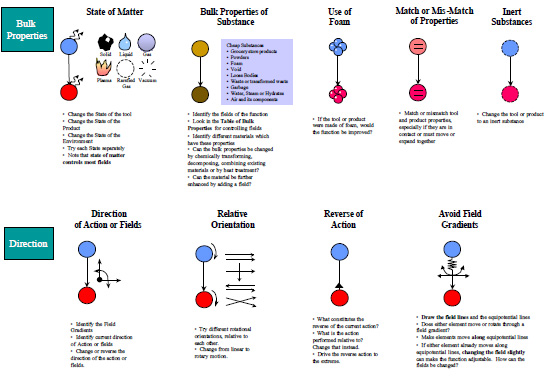

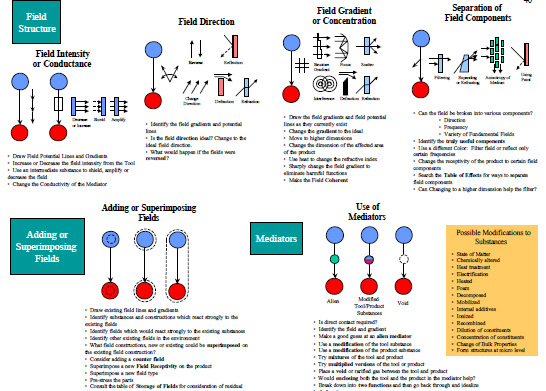

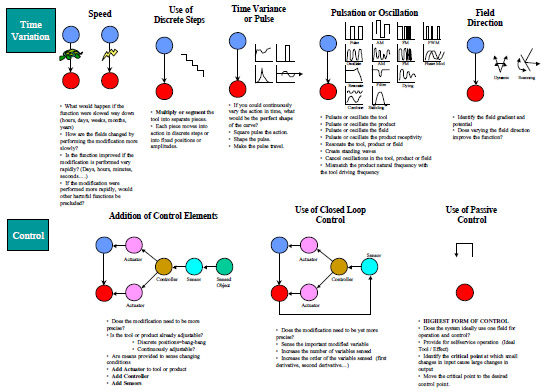
Knowing the chain of cause and effect means that we know the knobs and their settings which cause the problem. Now we must turn the knobs to settings which will give a long enduring change to the disadvantage. In effect, we turn the knobs to high. Some knobs are well behaved, we can easily turn them without anything getting worse. Other knobs cannot be turned, or turning them causes something else to get worse. Trying to turn these knobs results in a contradiction.

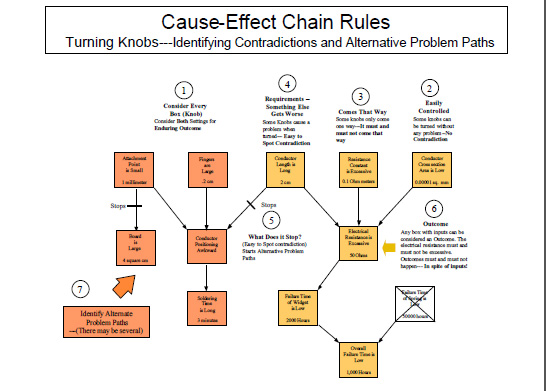
Turning the knobs to high has caused other problems. Now we must find a way of setting the knobs to both settings and thus removing the contradiction.
